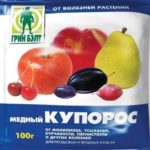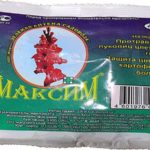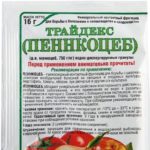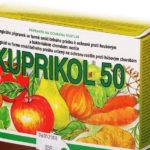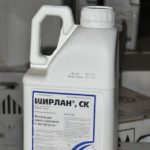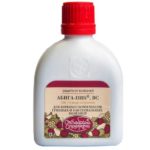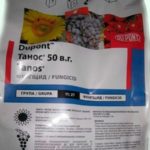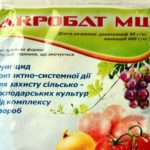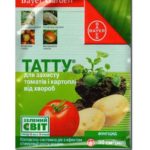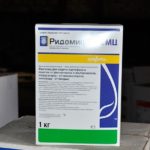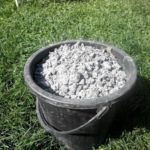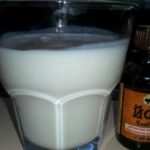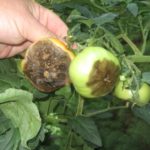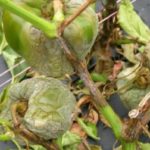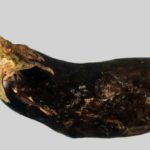Late blight occurs on the green parts of plants: stems, leaves, peduncles, and also affects the tubers. The disease affects the potatoes more intensively with high humidity and moderately warm weather. Of course, growers want to get rid of the disease in a short time and protect planting in the future.
Table of contents
- How to fight
- Three-time processing scheme landings
- Phytophlorosis disease
How to fight
You can fight the disease in various ways: this and chemical means of protecting potatoes and folk. Consider what are the main methods of control and prevention of the occurrence of phytophthora.
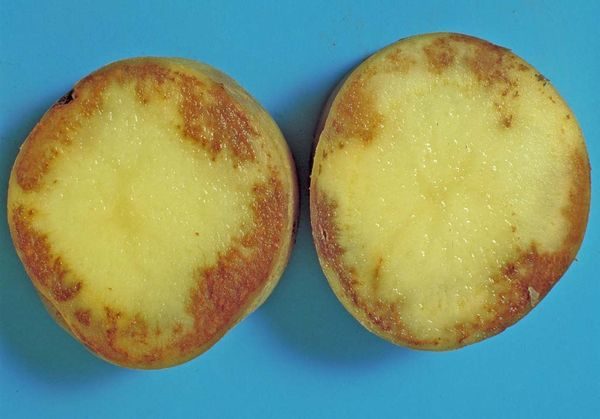
Preparations and terms of treatment before planting
In the ground there may be vegetation infected with spores of the fungus. In order not to spread the infection, in the spring, before planting, the soil is watered with Bordeaux mixture or copper sulphate solution (1-3%), then the earth is dug up.
The composition is prepared on the day of landing, and before spraying it is mixed.Place the solution in a sprayer and spray the sprouted potatoes, wait 1-2 hours, after planting the tubers. It is advised to deliver the tubers to the landing site in closed packages.
You can instead process drug Maxim.
- Copper sulfate
- Drug Maxim
What to process - seeds or tubers
Usually, when planting, it is the tubers (and not the seed for planting) that are sprayed with blight.
How to ensure the protection of potatoes against late blight after planting
To protect the culture from the disease, apply compounds with copper, for example, Bordeaux mixture 1% (it is prepared by pouring 100 g of copper sulphate, 100 g of lime in a ten-liter bucket of water).
The intervals between spraying 7-10 days. Last sprayed 21 days before harvest.
Simultaneously with spraying the Bordeaux mixture, other fungicides cannot be used.
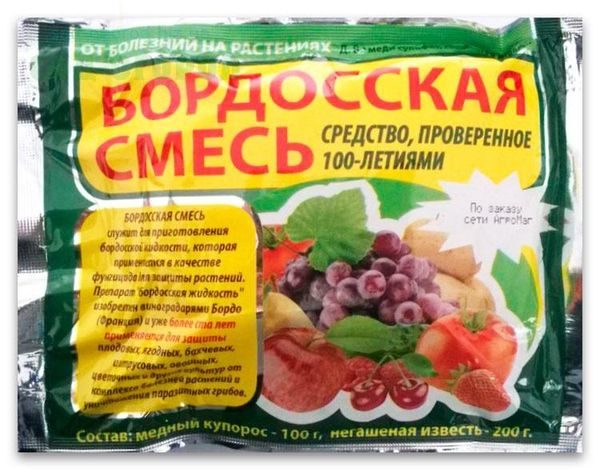
Means of preventing potatoes from phytophthora
Then:
- Isolate healthy bushes from the diseased, including garbage collection, weeding, it will delay the appearance of the disease on the stems and leaves until the time of budding.
- For planting pick only healthy potatoes.
- Treat fungi seed crops.
- Keep crop rotation: a year they plant potatoes, after 2 years lupins, beans, beans, and then again potatoes.
- If you pile up the bushes high, it will partially protect them from secondary infection.
- Sanitary measures - we will not allow stagnation of moisture; you should not water the potatoes by sprinkling in the evening, as otherwise dew will appear in the morning; timely weed out the weeds.
- Avoid excess nitrogen.
- Mow the tops one week before harvest.if you plan to use potatoes, and for 10 days, if you plan to plant the tubers in the future.
- Harvest when there is no rain, after drying the potatoes for 5 hours. Dig the aisles 5 days before harvesting. This makes picking potatoes easier and removes weeds.
Fungicides for potatoes
Contact fungicides
Must remain on the plants, when the pathogen comes into contact with them, he will die.
Table 1. Contact fungicides for late blight and application rate
| Fungicide | Norm kg / ha |
| penncozeb | 1.1—1.6 |
| Bravo | 2—2.3 |
| Novozir | 1.6 |
| Cupric, copper oxychloride | 2.4—3.2 |
| cuprose | 5.0 |
| utan | 1.2—1.6 |
| shirlan | 0.3—0.4 |
| Bordeaux mixture | 3.0 |
| abiga peak | 2.9—3.8 |
- Pennkoceb
- Cupricole
- Kuproksat
- Shirlan
- Abiga-Pik
Translaminar
Distributed only in places of irrigation, penetrating into the leaf tissue. This is an acrobat, kurzat.
Systemic
Already after 2-6 hours from the time of treatment, the rains will not reduce the effect of their action. And they clean out of the pathogen for 2-3 weeks. But pathogens produce resistance to them.
Therefore advise apply them 2 times per season. And if you still need spraying, you can use contact drugs or systemic fungicide with a completely different composition.
System contact
table 2. Systemic contact fungicides and the rate of their dilution
| Fungicide | Norm |
| Thanos | 0.6 l / ha |
| Acrobat Mc | 50g 10 liters of water |
| Tattu | 100ml 10 liters of water |
| Ridomil Gold | Not more than 2.5 kg / ha
50g 10 liters of water |
- Thanos
- Acrobat MC
- Tattu
- Ridomil Gold
Folk remedies
Trichopol
Buy medicine at a pharmacy, dissolve 1 tablet in 1 liter of water. Spray the bushes every 2 weeks.
Wood ash
When the potatoes rise, sprinkle ashes between the rows. When the potatoes bloom, then repeat.
Milk with iodine
1 liter of skim milk pour in a ten-liter bucket of water, drip 15 drops of iodine. Solution spray the bushes every 14 days.
- Trichopol
- Wood ash
- Milk with iodine
Means to fight own cooking
Garlic infusion with manganese
Spray the solution bushes every 2 weeks. Pour half a liter on the bush.
Milk serum
In the serum from yogurt, add the same amount of water and spray the bushes every 2–3 days.
Three-time processing scheme landings
It means that landing process 3 times:
- From the emergence of shoots to closing the foliage in a row use - Shirlan, Tattu.
- From the closing of the tops to the blooming of the buds apply - Ridomil Gold, Infinito.
- From the appearance of the flowers to the puffiness of the tops - Acrobat Mc.
Phytophlorosis disease
What is phytophthora potato
Phytophthalosis of potatoes is a dangerous disease resulting from the spread of a fungus, it develops very quickly, and as a result, yields are greatly reduced.
Signs of late blight
When precipitation spores from the leaves fall to the ground, then to the tubers, secondary lesion occurs.
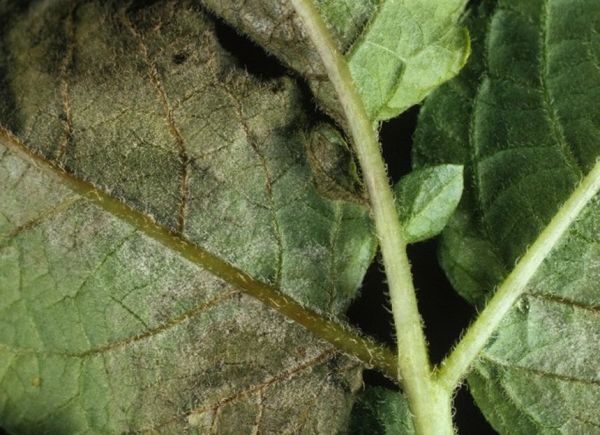
Phytophthora on tuber crops, primary lesion: small gray specks are visible, they grow and merge into darkish areas of pulp, the rind becomes reddish-brown.
Secondary lesion of tuber crops: they rot, decompose, have an unpleasant smell, then become soft. The disease can affect the very center of the tubers and in the winter, when the fungus begins to multiply, it becomes visible.
What is the causative agent of late blight?
Causative agent — pathogen oometsit Phytophthora infestans. Suggest that he originally from Mexico.
There are 2 strains of the disease: A1, it does not form a spore that can overwinter; A2 has spores that are resistant to frost. When oomecytes are crossed, new strains appear that are resistant to frost and fungicides.
Late blight and late blight - is there any difference
From the phytophthora fungi, the disease itself appears - late blight. She may be tomatoes, peppers, potatoes, eggplants, buckwheat, strawberries.
- Phytophthalosis of tomatoes
- Peppers with blight
- Eggplant, affected by blight
Why fight with blight
Late blight spoils every year 10—15% of harvested tubers, during the epitaphs — up to 70%.
The smallest temperature at which the disease is observed — 1.3 ° C, the largest - + 30 ° C. The incubation period lasts depending on the air temperature 3—16 days.
Spores of the fungus multiply more intensively at a temperature of + 10 ° C and ambient humidity 75%. Spores of the fungus are transferred by wind and rain from one plant to another.The wind carries spores 2-3 km from the initially affected plant, it is proven.
And remember that it is better to carry out preventive measures so that the plants do not get sick with late blight than to eliminate the disease and eliminate the consequences!

